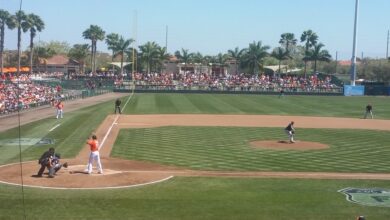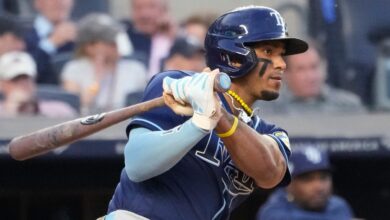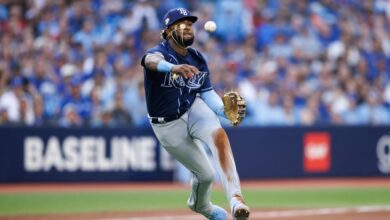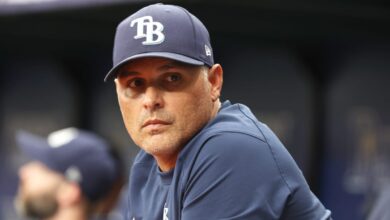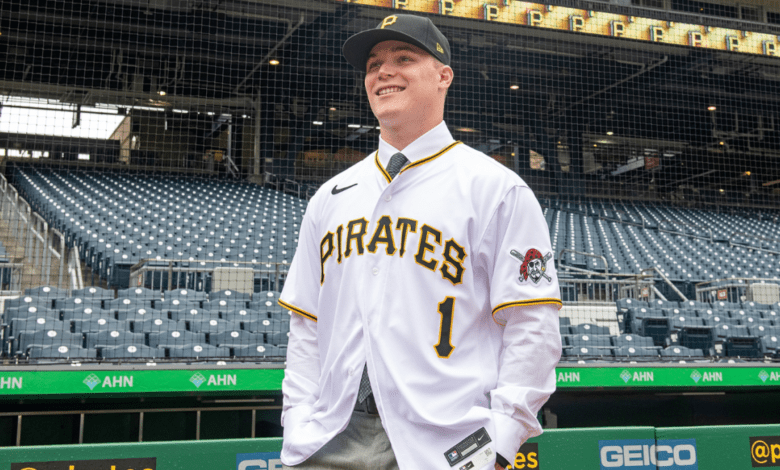
After a record 20 straight losing seasons, the Pirates were a National League wild card team in 2013-15, largely due to an increased use in analytics. They hope to use advanced analytics to make it happen again. Let’s examine what worked in 2013-15, what didn’t in 2016-19 and what they’re doing now.
Glory days
Rarely big players in the free agent market, the Pirates pursued catcher Russell Martin in 2013 after general manager Neal Huntington analyzed data on Martin’s pitch-framing skills and their effect. Meanwhile, over 2013-15, pitching coach Ray Searage and special assistant Jim Benedict revived the careers of A.J. Burnett, Francisco Liriano, Jason Grilli, Mark Melancon, Edinson Volquez and J.A. Happ by identifying underutilized but effective pitches in each pitcher’s arsenal. Both came to be regarded as pitching gurus. In 2015, the Marlins actually traded pitcher Trevor Williams for Benedict in a deal that was, in the words of the great philosopher Groucho Marx, “one of the most unheard of things I ever heard of.”
Most important was the Pirates’ usage of the infield shift. For instance, they ranked fourth in the Major Leagues in the use of the shift in 2013, according to FanGraphs. The upgrade at catcher, the various pitching reclamation projects and the shift all played significant roles in the reversal of the Pirates’ fortunes.
Clint Hurdle was the perfect manager for this squad, a practitioner of the old school and the new school. An intelligent man who turned down an academic scholarship to Harvard, Hurdle embraced the shifts and pitching analytics but often went by instinct, too. Bench players who got hot with the bat were inserted into the regular line-up until they cooled off. Sensing a momentum shift, Hurdle might burn a couple good pinch hitters early to keep a rally going.
Breaking up was not so hard to do
After the 2015 season when the Pirates won 98 games, the team was inexplicably broken up. Second baseman Neil Walker was traded to the Mets for pitcher Jon Niese, who didn’t survive the 2016 season in Pittsburgh. Happ was allowed to walk. Another starter, Charlie Morton, was traded for a marginal prospect. Veteran pitcher Ryan Vogelsong, a former Pirate, was reacquired as a free agent but missed most of 2016 with an injury.
Long-time American League catcher/designated hitter/outfielder John Jaso, known for consistently high on-base percentages, was signed to play first base and bat lead-off in 2016. The Pirates would adopt the “Moneyball” theory of stressing on-base percentage throughout the order. Studies showed that a team’s best hitters should occupy in the #1, 2 and 4 spots in the batting order. The #1, 2 and 4 spots were the new #3, 4 and 5 spots. I liked the idea. I was never a fan of the sacrifice bunt, the productive out or the #2 batter’s role of contact hitter who moves runners.
The Pirates started that season with Andrew McCutchen, the usual #3 batter, hitting second. Starling Marte, whose career high in home runs was 19, batted fourth. Francisco Cervelli hit fifth despite never having driven in more than 38 runs in a season. What may have been a good idea in theory was a disaster in practice. The players didn’t adjust to their new spots or the mandate to take more pitches. By mid-June the Pirates scrapped the plan and rearranged the order, including returning McCutchen to the #3 slot.
Changes
Things went downhill for the Pirates quickly over 2016-19. Searage somehow lost his magic touch. In 2018, Huntington made an infamous trade with the Rays to acquire Chris Archer for Austin Meadows, Tyler Glasnow and Shane Baz. Finally in 2019, owner Bob Nutting fired Huntington, Hurdle and Searage. Among the reasons cited were the Archer trade and the vast improvement of Glasnow, Morton and Gerrit Cole after leaving Pittsburgh. Glasnow was vocal about how far behind the Pirates had become in the use of analytics and how he felt the coaches failed to help him reach his potential. (Even so, I found it tiresome coming from Glasnow. Who threw the ball? The man most responsible for Glasnow’s poor showing in Pittsburgh was Glasnow!)
For the 2020 season, in came general manager Ben Cherington and manager Derek Shelton. Their orders were to find what successful small market teams like the Rays were doing right and duplicate it.
Do you want to know a secret?
When interviewed, neither Shelton nor Cherington reveal much publicly about their strategies. However, in observing the pandemic-shortened 2020 season and the nearly completed 2021 season, I can say the following with certainty:
1. They value the catcher. Well, I’m sure all teams do. But it’s clear the Pirates place high emphasis on the catcher’s pitch-framing ability and overall defensive skills, even at the expense of offense. Starter Jacob Stallings is a strong defensive catcher and a 2021 Gold Glove candidate. Stallings has developed into a good enough hitter given what he contributes behind the plate. Back-up catchers Luke Maile and John Ryan Murphy in 2020 and Michael Perez in 2021 came with strong defensive and below-average offensive resumes. (Maile suffered a preseason injury and never played a game for the Pirates.)
This year, the Pirates made power-hitting Louisville catcher Henry Davis the overall #1 choice in the draft. Davis wants to remain a catcher. For that to happen, I’m sure he’s going to have to measure up to the Pirates’ ideal defensively.
2. Infield shifts are still in frequent use. The Pirates rank 12th in the Majors in the use of the shift so far in 2021, according to Baseball Savant. It’s a drop from 2013, probably because more teams shift today. Occasionally, the shifts are more radical than what we saw from Hurdle. None more so than in 2020, when Shelton would go to a four-outfielder alignment whenever then-Brewer Justin Smoak came to the plate.
3. A good hitter will be used in the #2 spot. Ke’Bryan Hayes, who slashed .376/.442/.682 as a rookie in 2020, had been used in the second spot for most of 2021. The Pirates recently moved him elsewhere in the order in the hopes of shaking him from his sophomore slump. Recent acquisition Yoshi Tsutsugo, who has surprised with eight home runs in 98 at-bats at the close of Sunday’s action, has frequently hit second. As noted, I like this philosophy. With the lead-off batter on first base, there’s a right-side hole to hit through and a pitcher who doesn’t want to issue a walk. I say, swing away! However, Shelton doesn’t devalue the #3 spot, currently occupied by his best hitter, Bryan Reynolds, on a daily basis.
4. The starting pitcher won’t go through the order more than twice. Typically, even when pitching well, Pirates starters have gone only four or five innings, with the rest of the innings covered by the bullpen. The Pirates don’t have the strong eight- or nine-man bullpen necessary to pull this off. Yet Shelton remains steadfast in this belief.
We saw this strategy blow up in game six of the 2020 World Series when Rays manager Kevin Cash removed Blake Snell after a one-out single in the sixth inning, even though he was leading 1-0, surrendering just two hits and striking out nine. But it had been predetermined he would go through the order twice and then the bullpen would take over. As you know, the bullpen lost the game and the Dodgers won the World Series. I just don’t understand a manager determining in the morning what he’s going to do in the game in the evening. It’s as if it’s a game of Strat-O-Matic Baseball instead of one played by humans. Mark me down as not a fan of this particular idea.
Conclusion
Now you have an inkling of how things will be done on the Pirates under the current regime. Cherington must continue to acquire good prospects through drafting and trading for any of this to matter.


